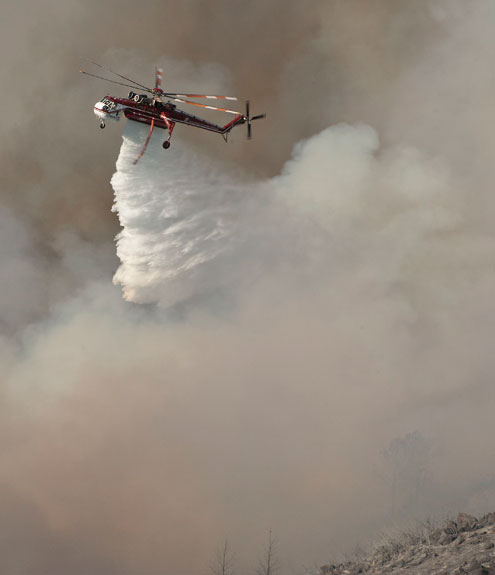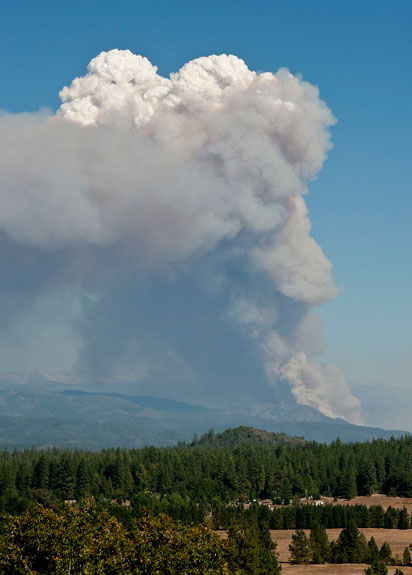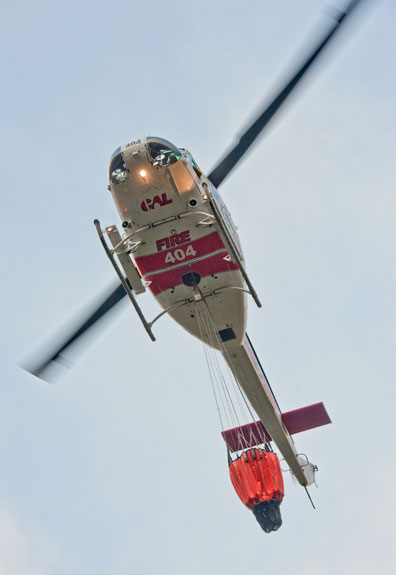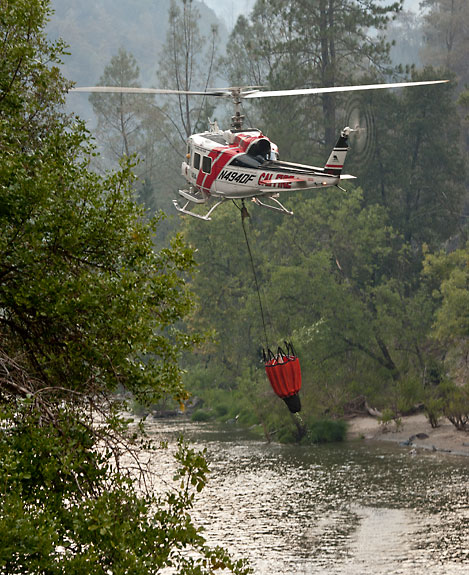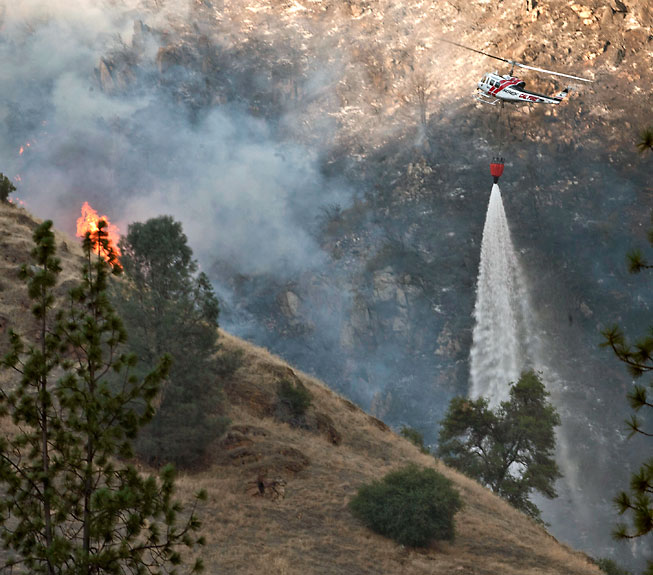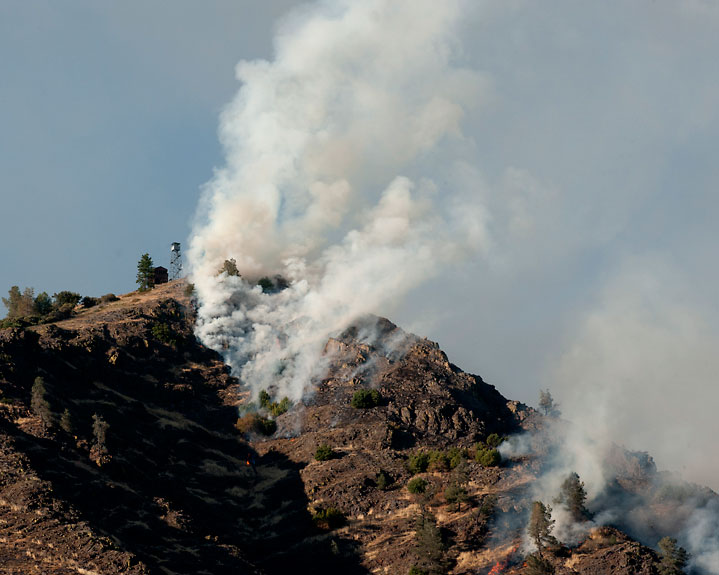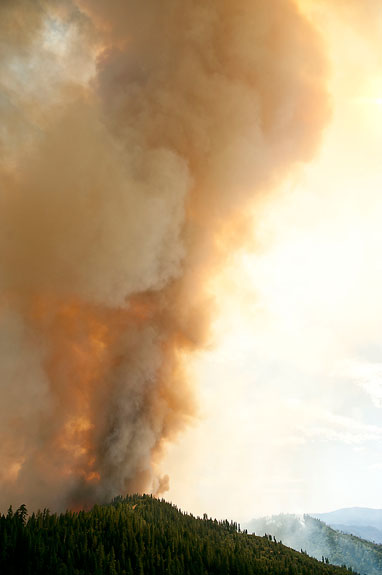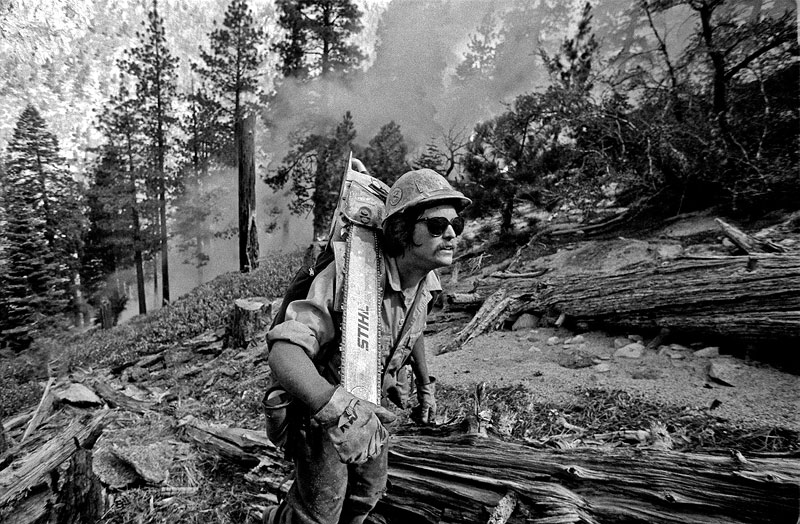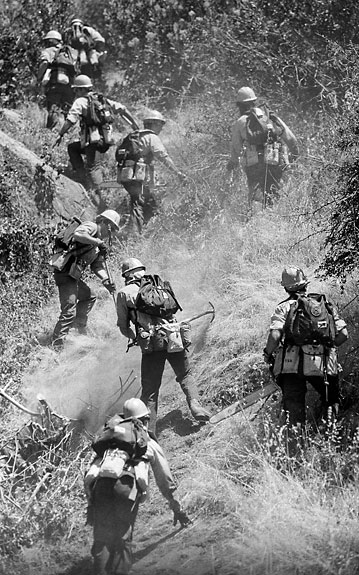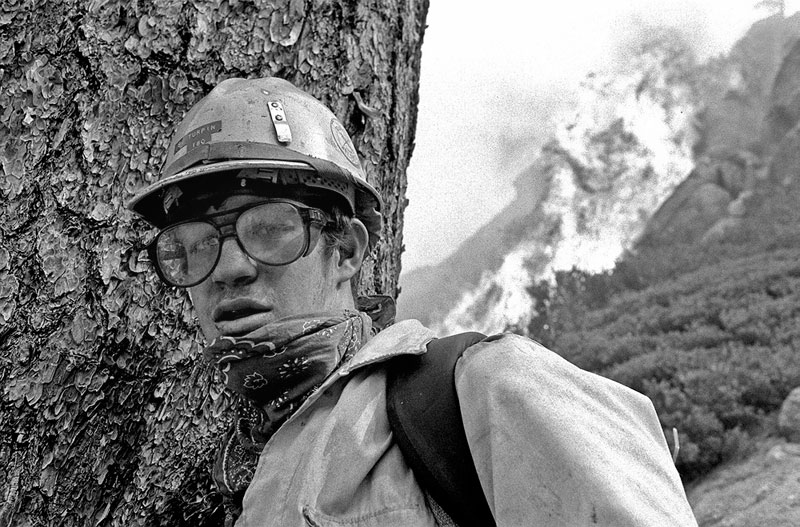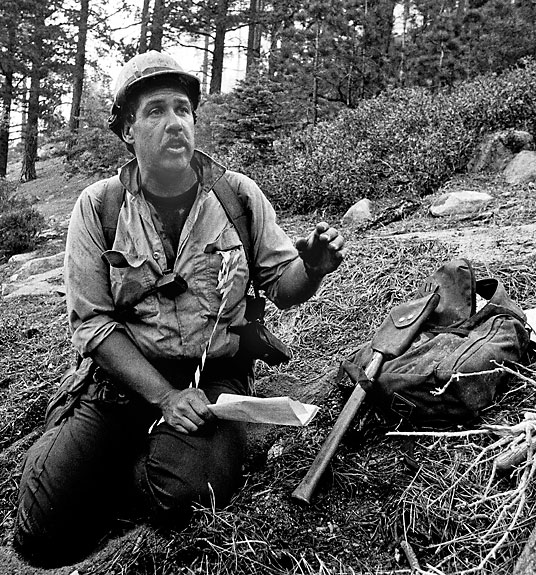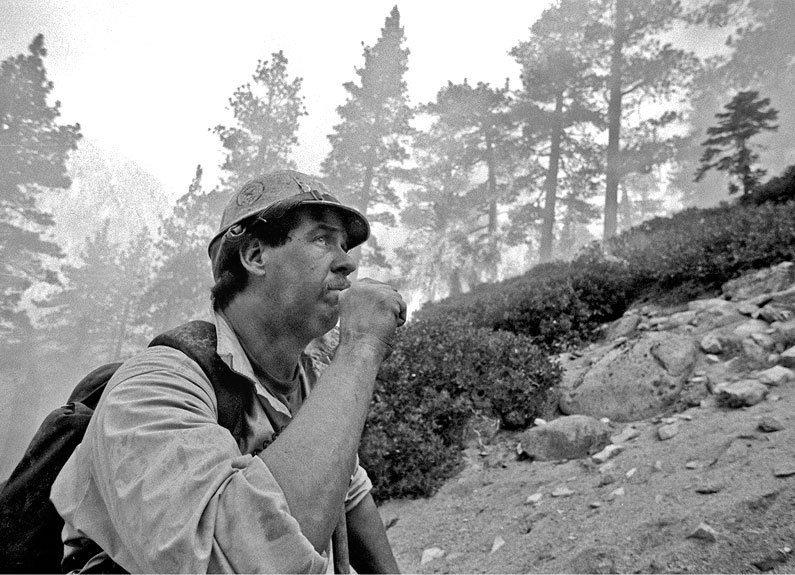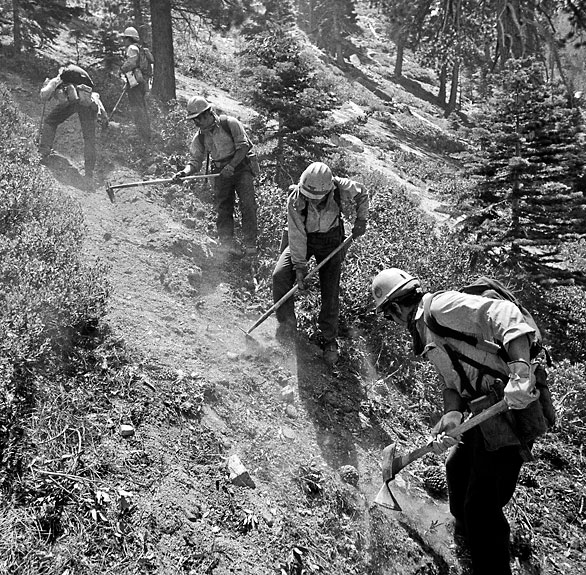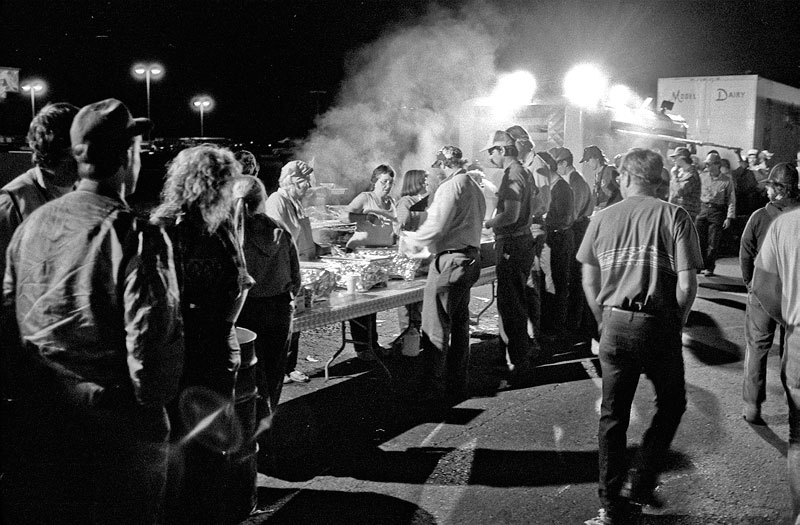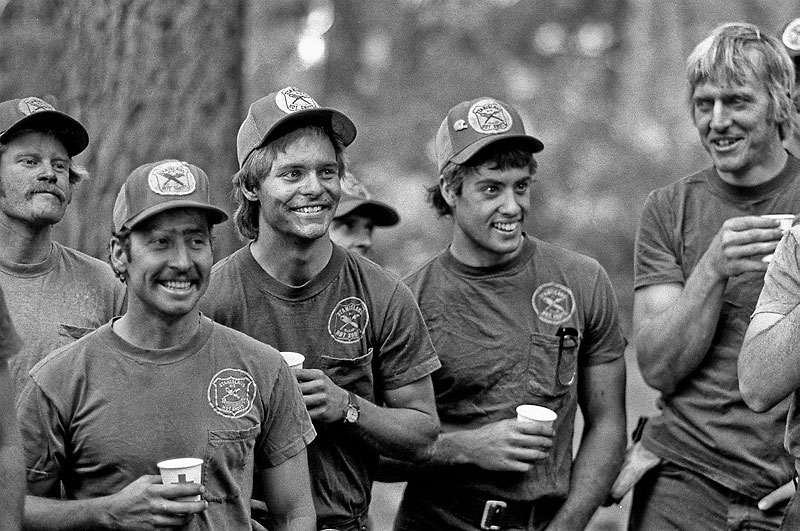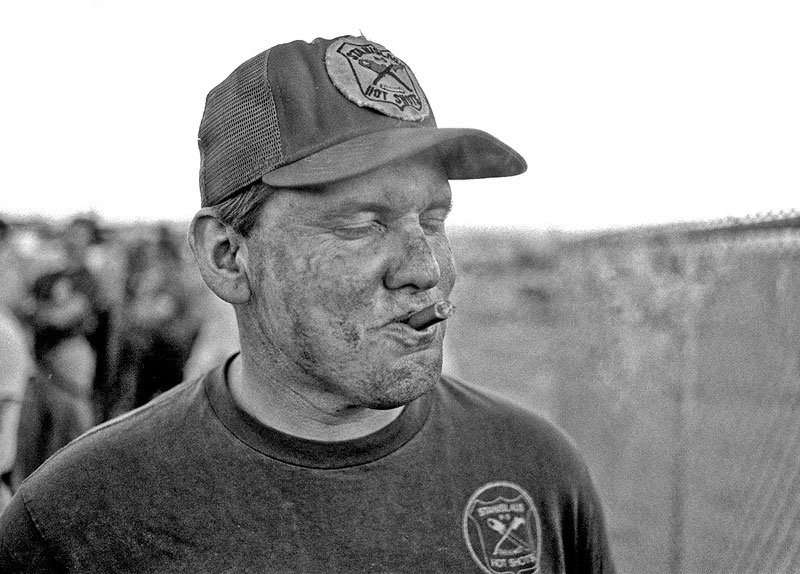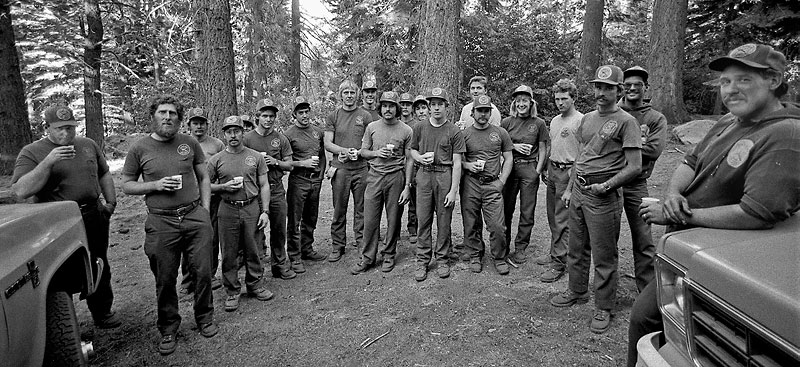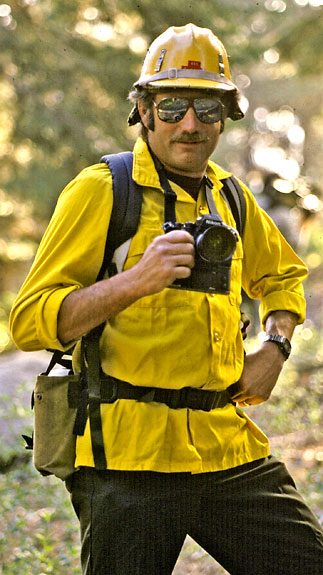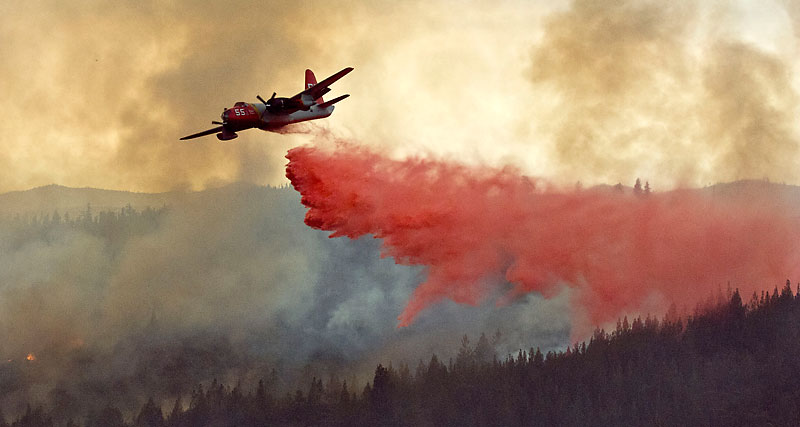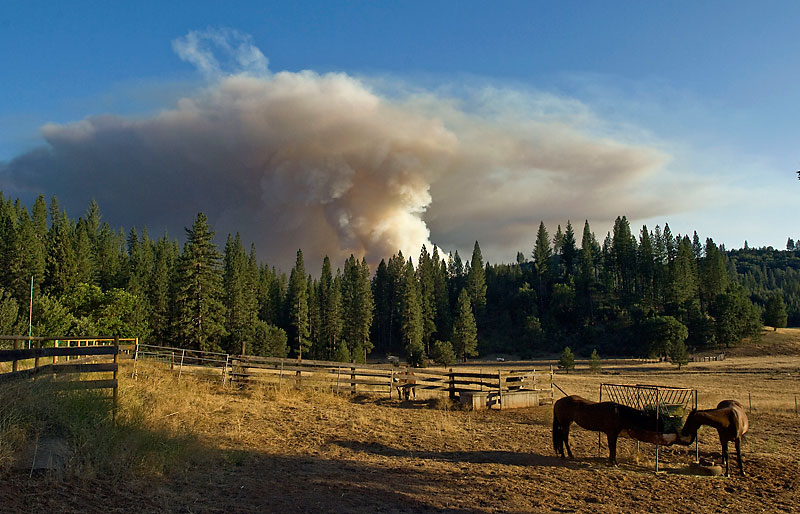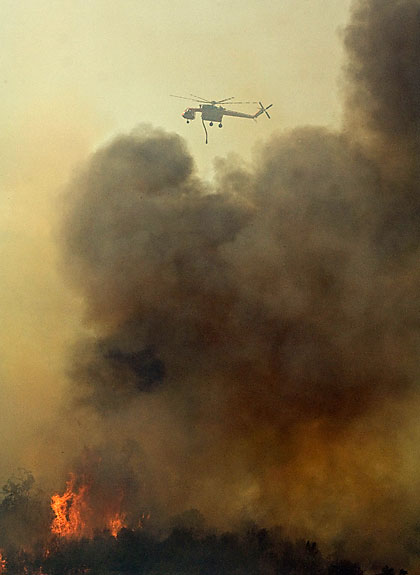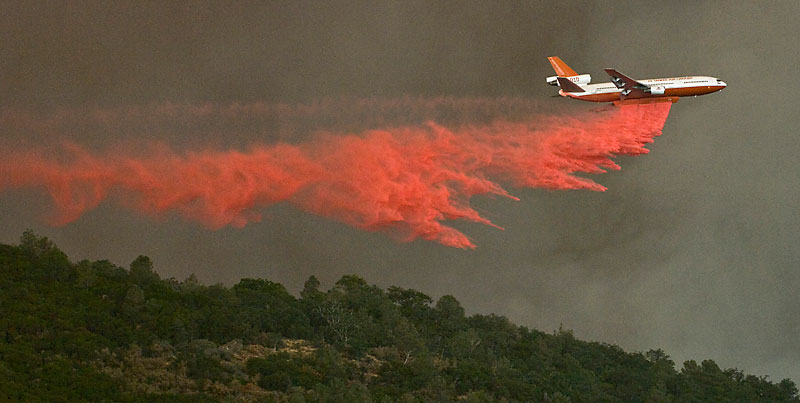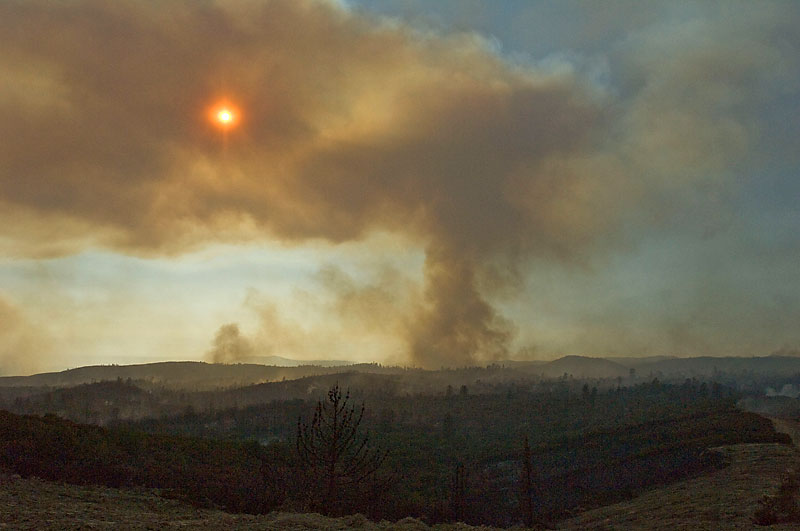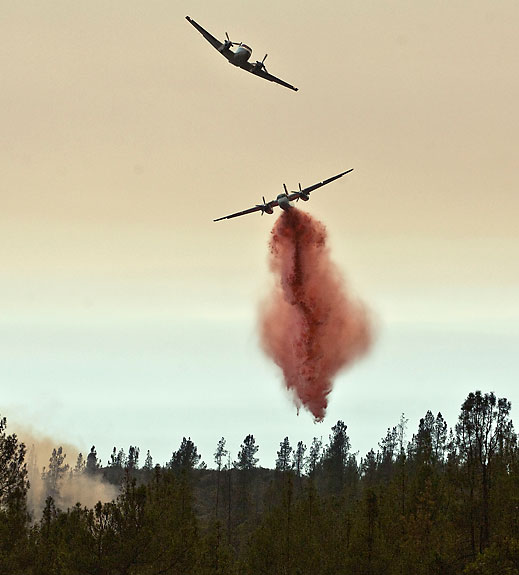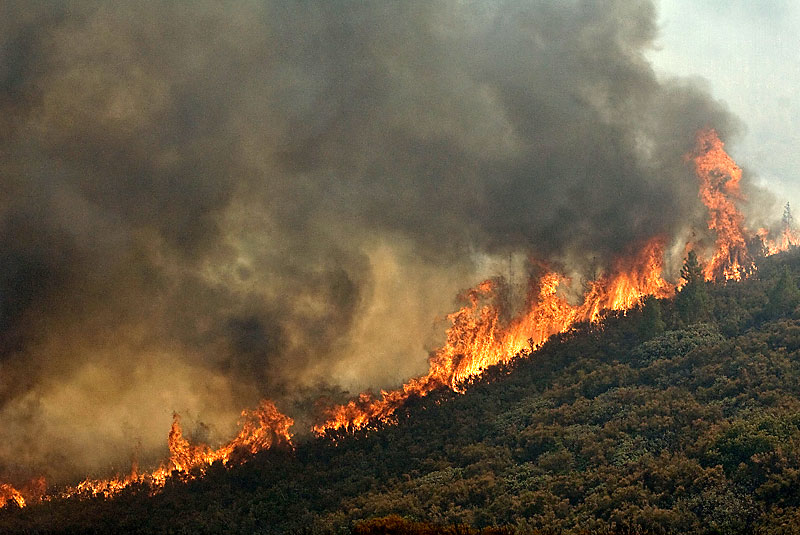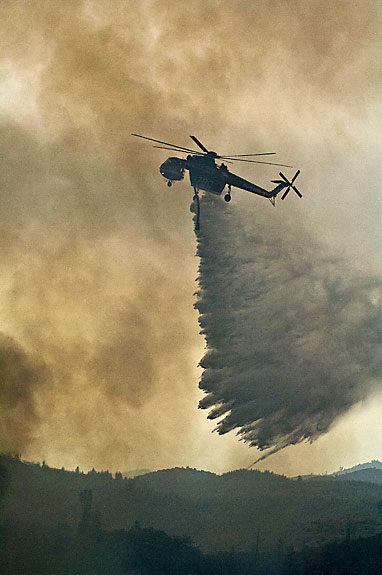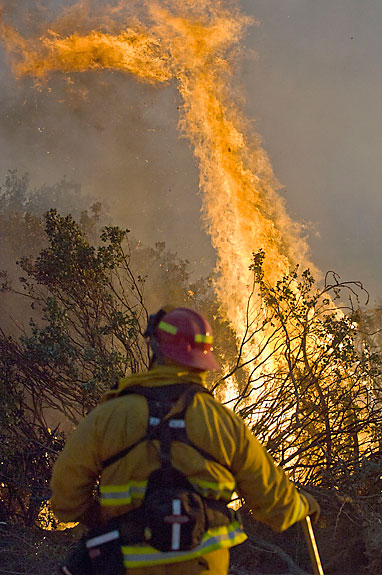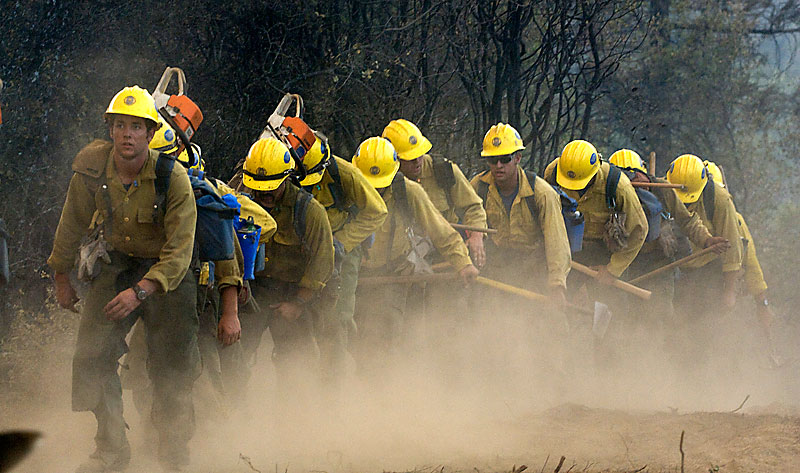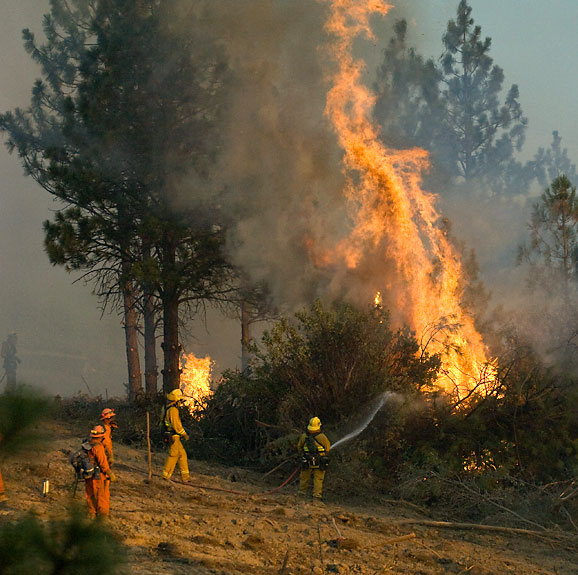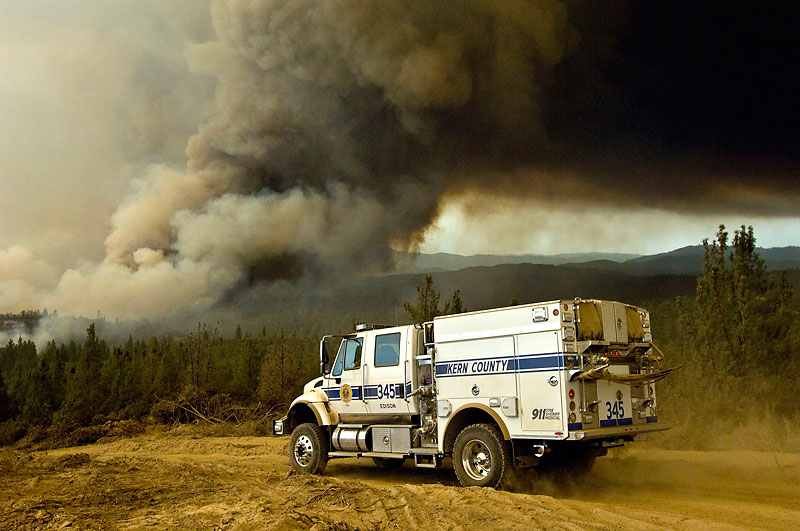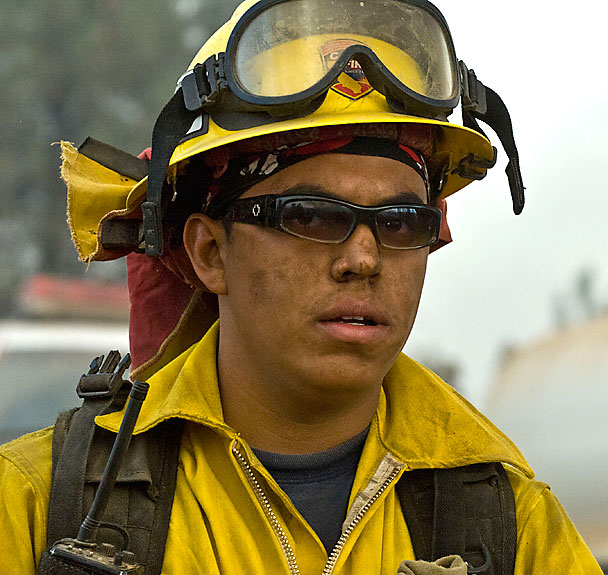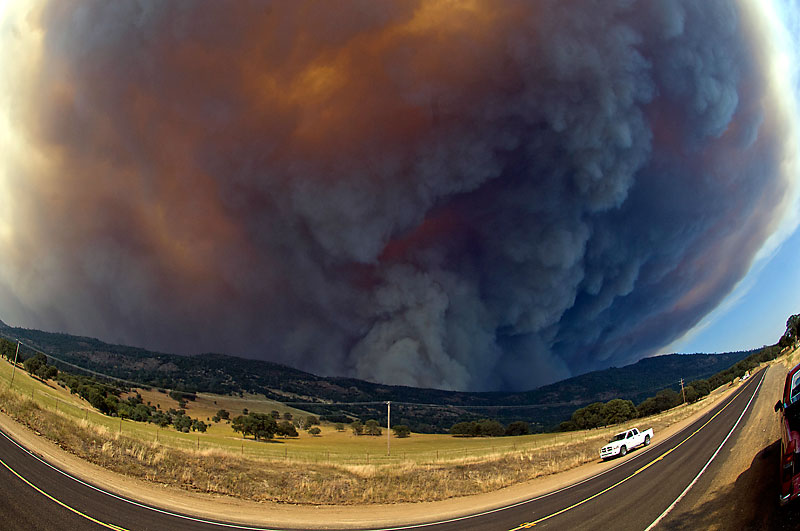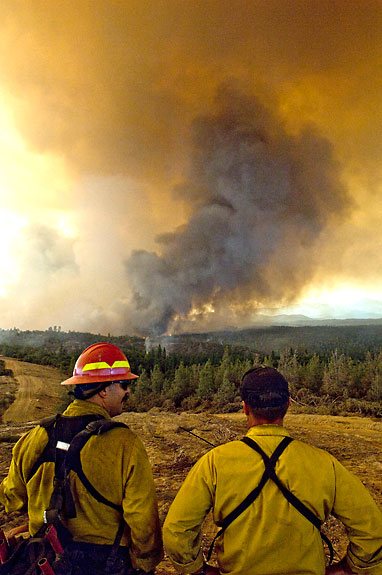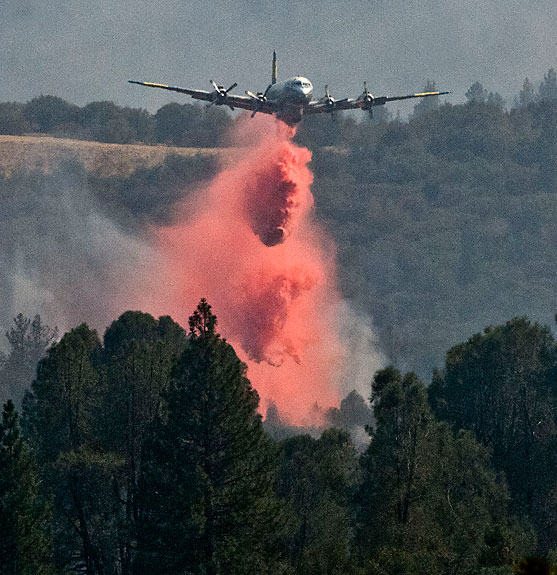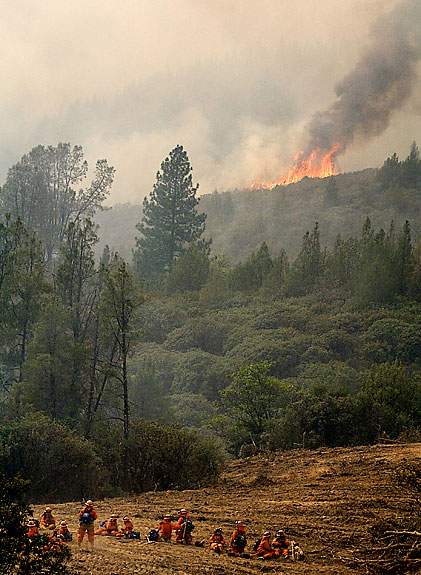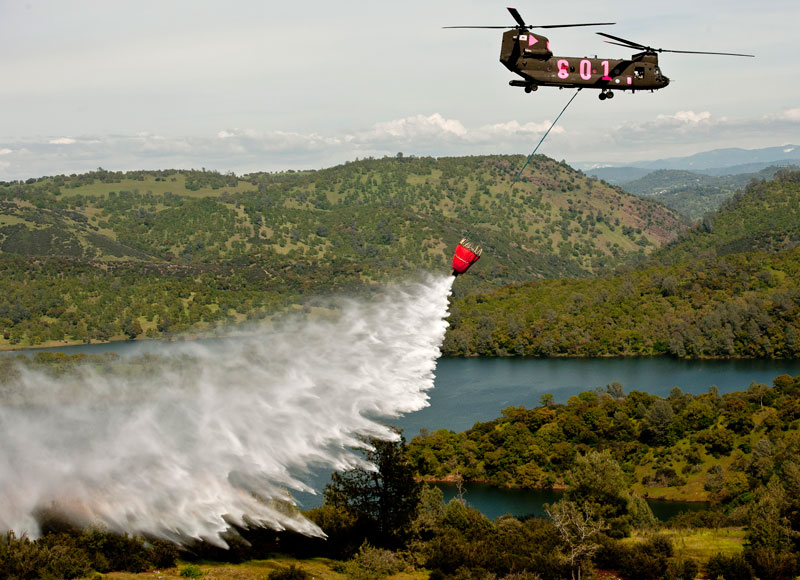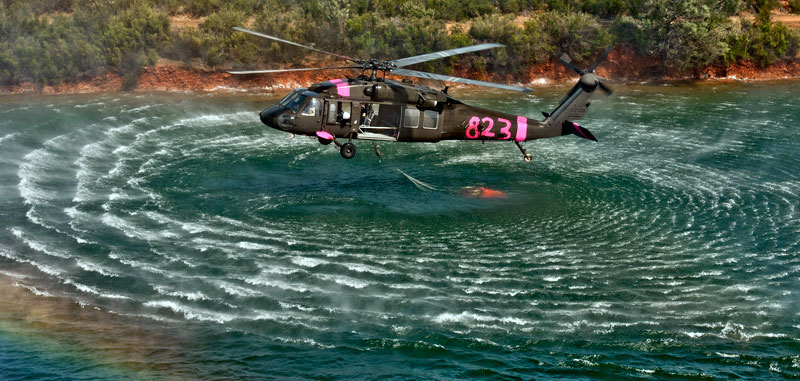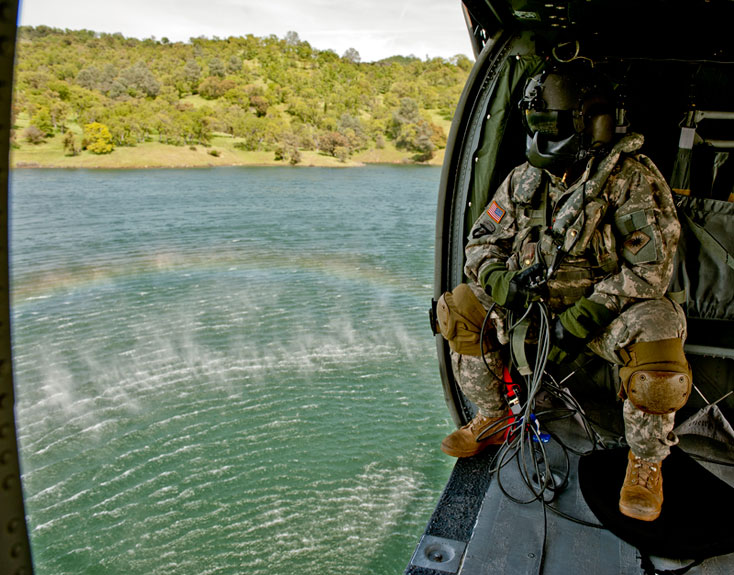Last Thursday I was working on a blog about my first season photographing the NFL, when I got an email from my friend Wes Schultz. Wes sent me a URL from Wildlanfire.com that said there was a fire near El Portal and they were requesting recourses. I could see a big column of smoke from my balcony. So, I started getting my camera equipment ready and pulled all of my fire gear together. They named the fire the Motor Fire because a motor home caught fire on highway 140 starting fires on both sides of the Merced River.
Before I left the house about 3:30 pm, I photographed this column of smoke. We are looking east from my house. The smoke blocks the view of Yosemite National Park.
After driving nearly 60 miles I was on Highway 140 close to the fire. With my 400mm and a 1.4 extender, I could photograph the Helicopters dropping water directly on the fire. If you have been there before, it is between Savages Trading Post and the Cedar Lodge.
I continued up river where I found helicopter 404 from the Columbia Helitack base scooping water out of the Merced River.
404 has a new paint job because CDF, California Department of Forestry is now called Cal Fire.
The Cal Fire helicopter pilots are amazing.
Cal Fire 404 put water down in drainage to slow progress of the fire.
On the way out to make deadline, I could see the fire had reached Trumbull Peak. That gave me an idea where the fire was going. The next day I planed to got to Trumbull Peak from the old Coulterville to Yosemite stagecoach toll road. This would be my last change to photograph the fire because Saturday and Sunday I was covering NFL football game.
I got a late start but I could see there was still smoke rising. To say the road was a little rougher that I remember is an understatement. My new rattle loose and I have to use Duck-Tape of keep it from falling off. I had to ride up on the bank of the road along with a little brush smashing. My Truck has the scars to prove it made the trip.  The next day the Forest Service closed the road for safety reasons. By the time I got to just below the Peak, I met the Fulton Hot Shots come down the road. The fire came up over the Trumbull Peak Lookout and they decided to fall back to where I took this image of the Motor fire jumping the Peak.
